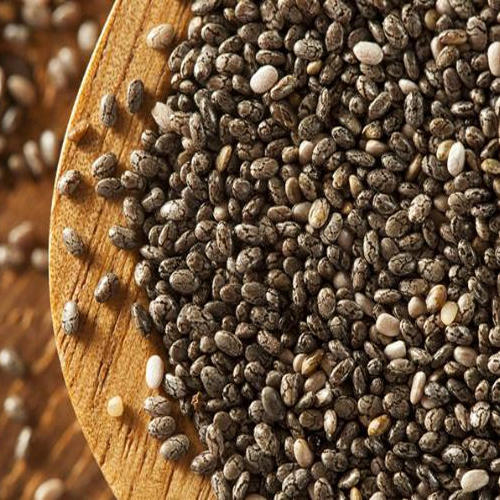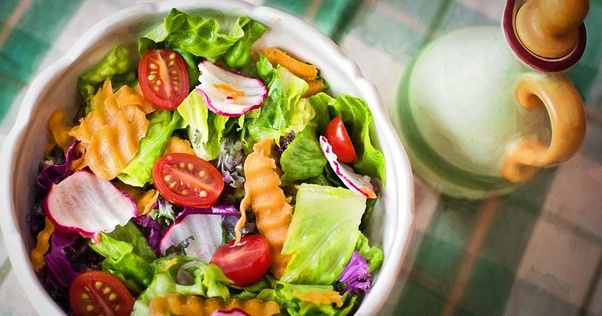Chia seeds “Life in Nature” is pleased to present you the clever little Chia seed, which means “strength” or “make strong” among the Maya. It even gave its name to the state of Chiapas (Chia River) in Mexico.
The chia seeds are a good alternative to increase our intake of essential fatty acids, especially omega 3 and to reduce appetite through a system: no more sugar cravings in the afternoon! Let’s discover together this valuable food.
The History Of Chia
Chia (Salvia hispanica L.) is a plant of the family Lamiaceae (mint family), native to Mexico’s central valley and mountainous areas of Peru. The seeds are small, round. There are two varieties, a clear, called Salba, and one black. The color varies depending on the source of chia.
Today chia is grown in South America, Australia, and the United States.
With beans, corn, and amaranth, chia composed the staple food of the Aztecs and Mayas. It was also used as offerings in religious rituals.
The Shia began to be used as human food as early as 3500 BC.
It is to Professor Vladimir Vuksan, attached to the Faculty of Medicine, University of Toronto, working at St. Michael’s Hospital in Toronto that we owe the most extensive research conducted on this plant. This study, spread over a period of 15 years found that chia contains more nutrients than many foods known.
* 50% more folate than asparagus
* 15 times more magnesium than broccoli
* 1.1 times more fiber than wheat bran
* 2.5 times more protein than kidney beans
* 8 times more Omega-3 than salmon
* 3 times more iron than spinach
* 2 times more potassium than bananas
* 3 times more antioxidants than blueberries
* 6 times more calcium than milk
Only 2 tablespoons of the seeds provide 2.5 grams of fatty acid Omega-3 and 4.2 grams of fiber!
Chia shows the efficiency of omega-3 greater than 230% compared to flax (in animal experiments). This marked difference was attributable to the great wealth of antioxidant chia. Moreover, it does not contain phytoestrogens.
The chia seeds are sometimes called “Indian food runner” (the food of the Indians who are) because they constitute the food of endurance among tribes of Native Americans. The Aztecs used it as an energy source during their 24-hour market as chia seeds are high in fiber and fat, especially omega 3. This explains why they could walk over a long period with the only chia as food.
Today they are eaten in various forms in South America, such as drinking, “chia Fresca” so-called “iskiate.
Soaked in water, chia seeds form a solid gel with their outer layer that is rich in soluble fiber.
In the stomach, mixed with gastric juice, they become gelatinous and thus create a barrier between carbohydrates and digestive enzymes. Carbohydrates are absorbed more slowly, eating chia seeds help to stabilize blood sugar, thus having an interest in people with diabetes. (Vladimir Vuksan, 2002)
This is corroborated by a 2007 study in Diabetes Care, where researchers found that patients with type 2 diabetes, who consumed 37 g of chia (about 6 tablespoons) daily, saw their rate of protein C -reactive protein (a marker of inflammation) decrease of 32%, decreased systolic and diastolic, and an improvement in blood sugar.
Properties chia
Chia is a gluten-free food, it contains 30% high-quality protein, 30% fiber for the most soluble, and great antioxidant levels. The “oil in the seed is well preserved and does not go rancid.
By their composition, chia seeds can be classified in the family of oilseeds.
We can compare the chia seed flax for its high in Omega 3, however rancid flax because it has no antioxidant by itself, unlike chia seeds.
Its seeds were used in the composition of drinks or were pressed to extract oil.
Their daily intake should be 1 large tablespoon (about 15 grams). Do not exceed 30 g. per day.
From a nutritional standpoint, the chia seeds are interesting precisely this richness in omega 3 and fiber, they appear to be well absorbed as they become gelatinous upon contact with saliva and gastric juice, whereas seeds Flax is not digested if they are not crushed.
Chia seeds contain 4.8 grams of fiber a tablespoon, these fibers are essential to health.
They also play a role in the prevention of cardiovascular disease (blood pressure, inflammatory factors).
Despite these promising results, chia obviously can not treat disease in itself, but it will reap all the benefits by incorporating our daily diet.
How to use chia seeds
The taste of chia seeds is very shallow. It is possible to mix all kinds of food, sweet or salty.
They can be used for making desserts (cream, cakes, muffins,…) or simply mixed with a salad.
In South America, chia is often consumed as a drink called “chia fresca”: water, chia seeds, lemon juice, and sugar.
Most recipes contain at least one tablespoon of chia seeds. And recommendations daily omega 3 are met.
In conclusion, the chia seeds are very attractive nutritionally.
Adopt the chia seeds in our diet
To take advantage of its properties, it is not necessary to grind the chia wort as flaxseed. By cons, like any food, it is recommended to chew as much as possible.
By incorporating it into a liquid such as juice, smoothies, cereal or in yogurt, the seed becomes soft and begins its process of germination. It can be incorporated into salad dressings or put on salads, as the seed absorbs the dressing and binds all the ingredients for the salad. It can also be incorporated into bread dough or pie.
Like any food ground, ground chia is easily assimilated.
You can also replace the binding effect of the egg with 3 tablespoons of whole chia put in a little water or directly into the wet ingredients. When you put the whole chia, we must wait a little longer, that the fibers absorb water and the consistency of the egg is formed. This takes about 40 minutes. Otherwise, it is directly 3 tablespoons of ground chia in the recipe.
The major nutritional benefits of Chia
In summary:
* Chia contains no gluten and is suitable for people who are allergic.
* Omega-3
Chia seed is commercially available food that naturally contains the Omega-3 all over the world. Indeed, 2 tablespoons chia Daily is sufficient to supply the body with more than 100% of the required amount of Omega-3 per day.
* Antioxidants
Chia is rich in natural antioxidants that help prevent oxidative stress.
* Fiber
The same two tablespoons daily alone provide 30% of daily fiber needs.
No more problems with constipation, no more ups and downs of sugar in diabetics and finished cravings.
Chia indeed absorbs 14 times its weight in water: it slows digestion and the release of sugars in the body and creates, finally, a prolonged feeling of satiety. Taken at breakfast, the cereal reduces the urge to eat sugar, we can adopt as part of a plan.
*Proteins
Excellent source of essential amino acids, chia contains about 22% protein by weight. chia is, therefore, a good source of valuable proteins.
* Vitamins and minerals
chia is an excellent source of calcium, phosphorus, magnesium, potassium, iron, zinc and copper while containing little sodium.




